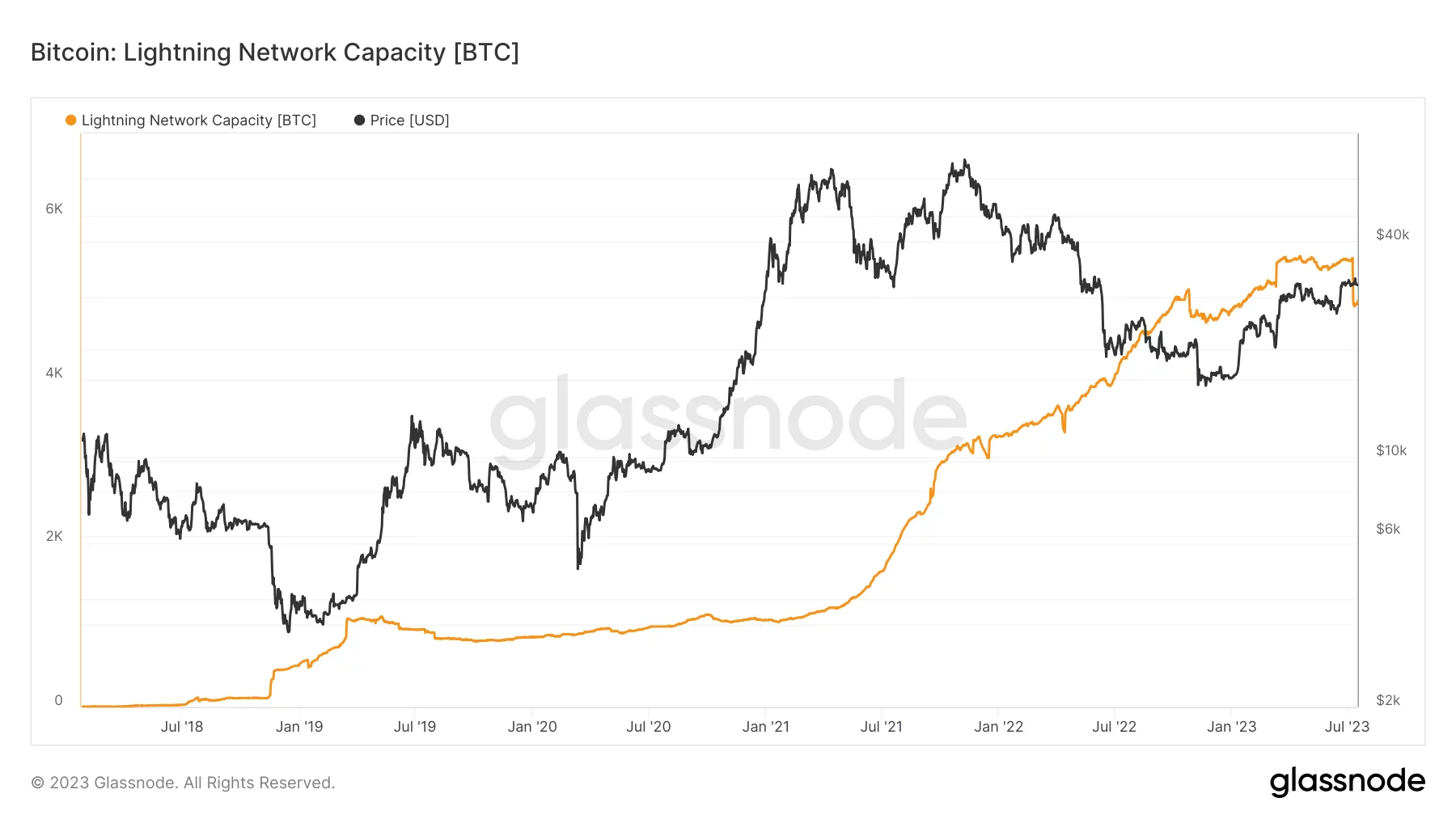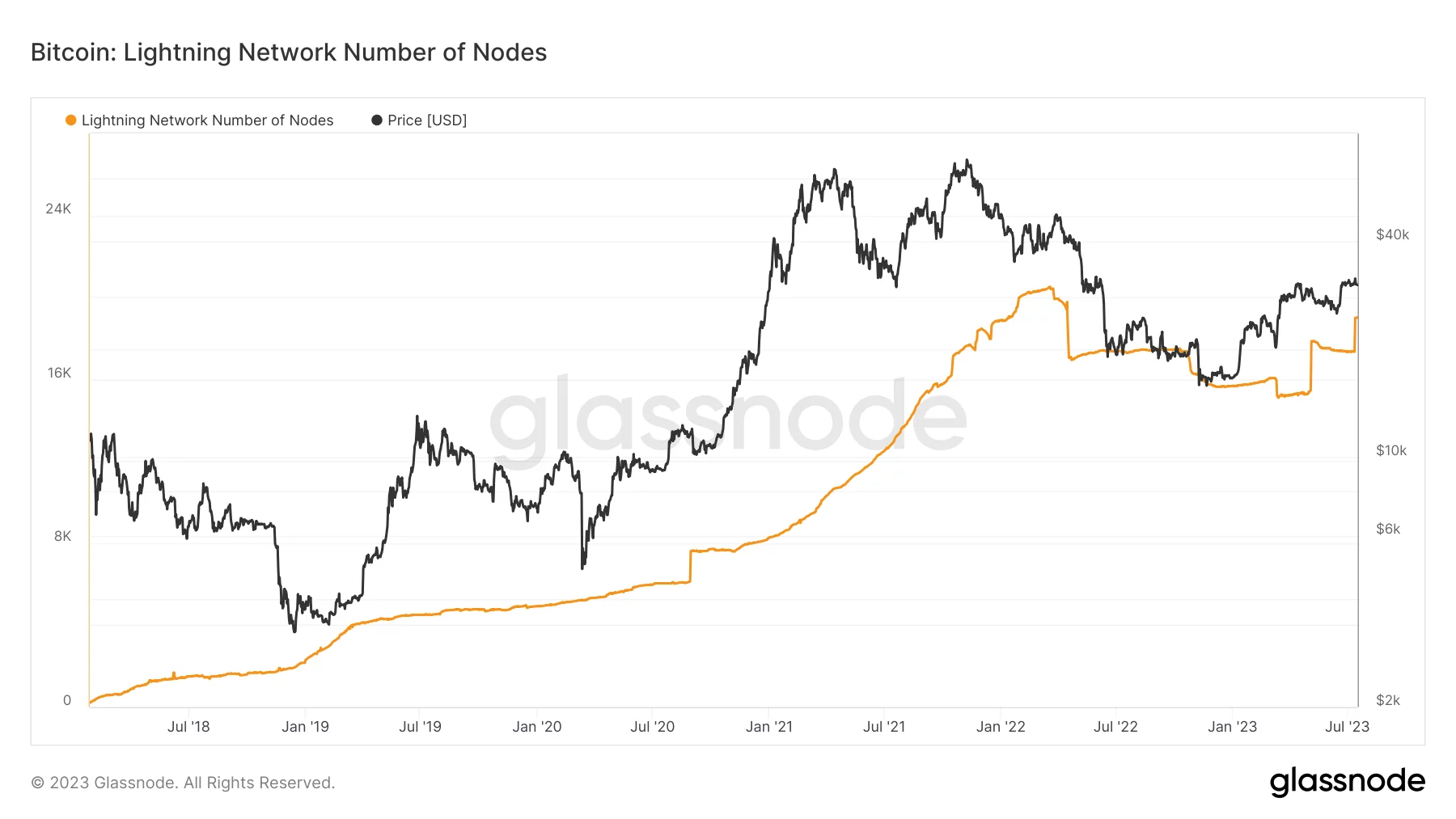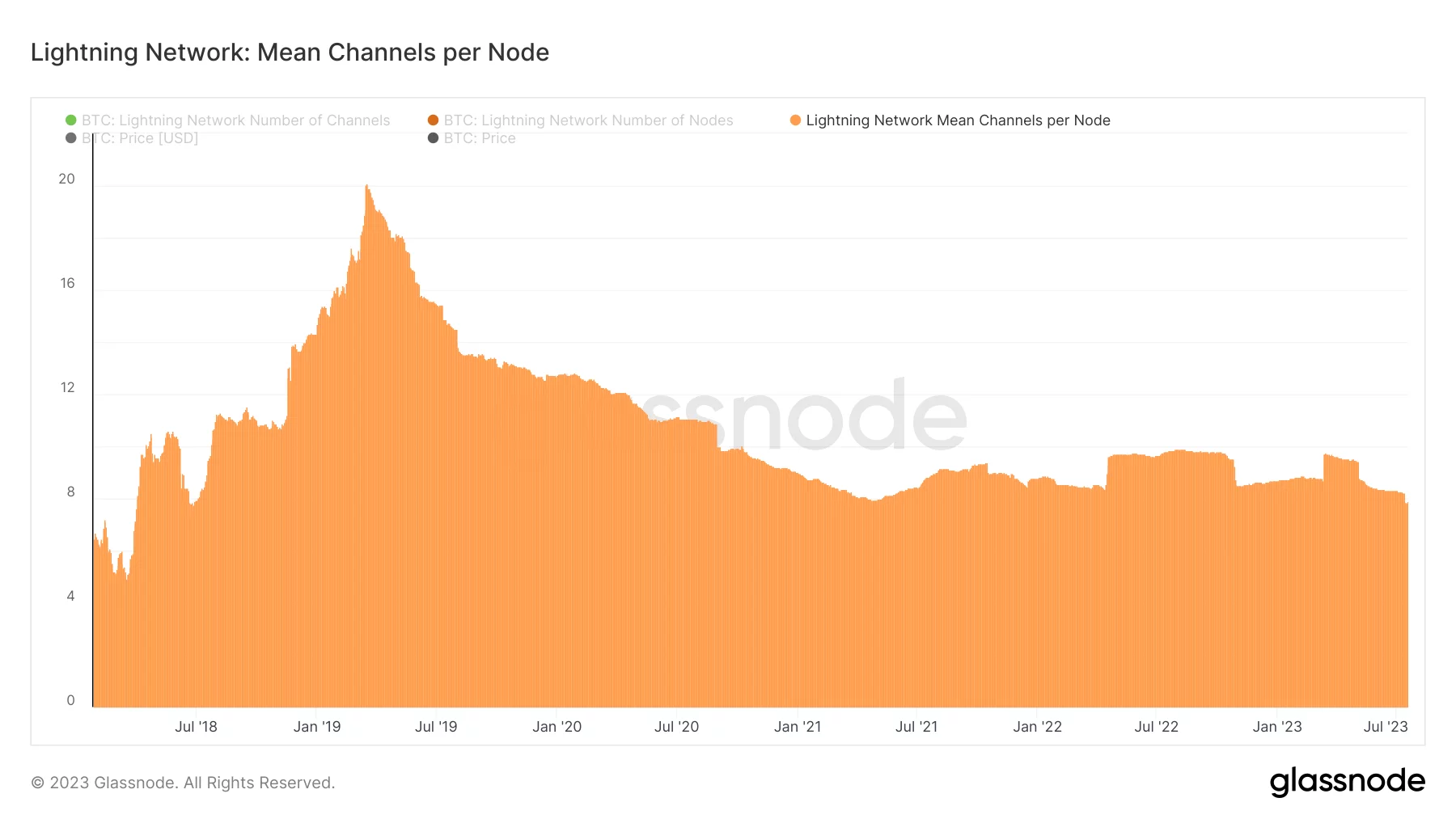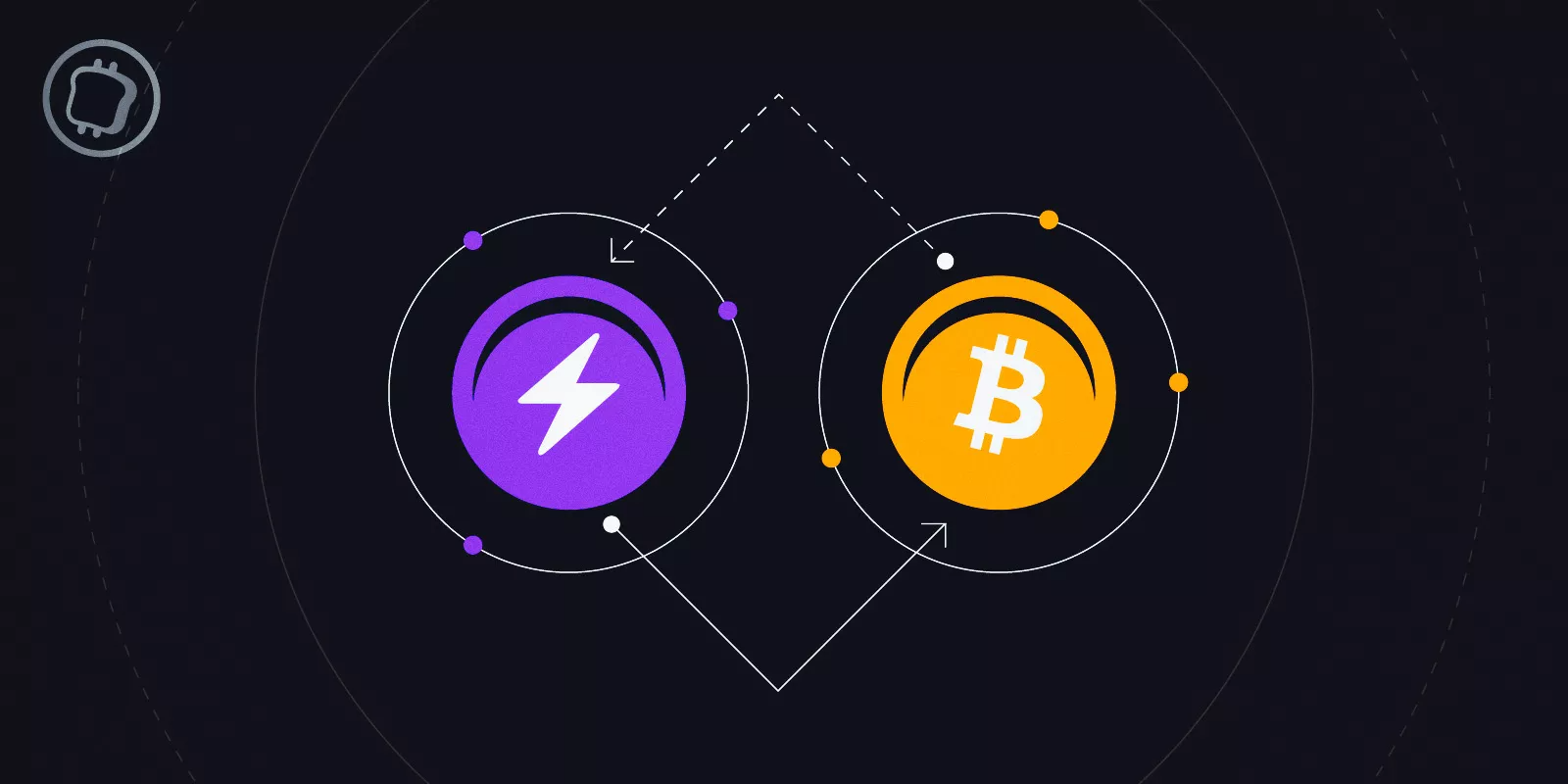While the price of Bitcoin (BTC) is often the focus of analysis, it can be interesting to look at the use cases created in its ecosystem, such as the Lightning Network. How is the adoption of this layer 2 dedicated to fast, low-cost payments going?
How is the adoption of the Lightning Network going?
The Bitcoin Lightning Network (BTC) is known for its ability to enable very fast and low-cost payments to its users. As Binance adopts the network to make transactions smoother for its users, it’s worth taking a look at the network’s key statistics to see how it’s growing.
First of all, we can look at the network’s capacity. We note that despite significant withdrawals around ten days ago, the Ligthning Network is currently powered by more than 4,950 BTC, around 10% less than its all-time high of 5,500 on 17 April.
As the chart below shows, Layer 2’s capacity is not correlated with the BTC price (in black), and tends to evolve independently:

Figure 1 – Lightning Network capacity in BTC, compared to BTC price
The second important metric is the number of nodes on the network. Here, this statistic maintains a certain correlation with the price of Bitcoin, at least since 2022. As the graph below shows, a peak was reached at more than 20,500 nodes in March 2022, and after a drop to 15,000 a year later, there are now 19,000:

Figure 2: Number of nodes on the Ligthning Network
The channel update
To communicate with each other and make the movement of cash more efficient, the nodes of the Lightning Network are connected to each other via channels.
After a year of stagnation in 2022 at around 86,000 and then a drop to 67,000, the number of channels seems to be rising again and is currently close to 75,000:

Figure 3 – Number of channels on the Lightning Network
Today, on average, a node is connected to just under 8 channels, which is far fewer than the 20 in March 2019. However, this average should be put into perspective, because at the time, the network numbered barely 4,000 nodes:

Figure 4 – Average number of channels per node on the Lightning Network
As we have seen from these statistics, despite a brief slowdown caused by the bear market, the Lightning Network continues to grow. However, there is still plenty of room for improvement, given that its capacity is currently ‘only’ $148.5 million. We can come back to these statistics in the future, as the ecosystem as a whole grows.
